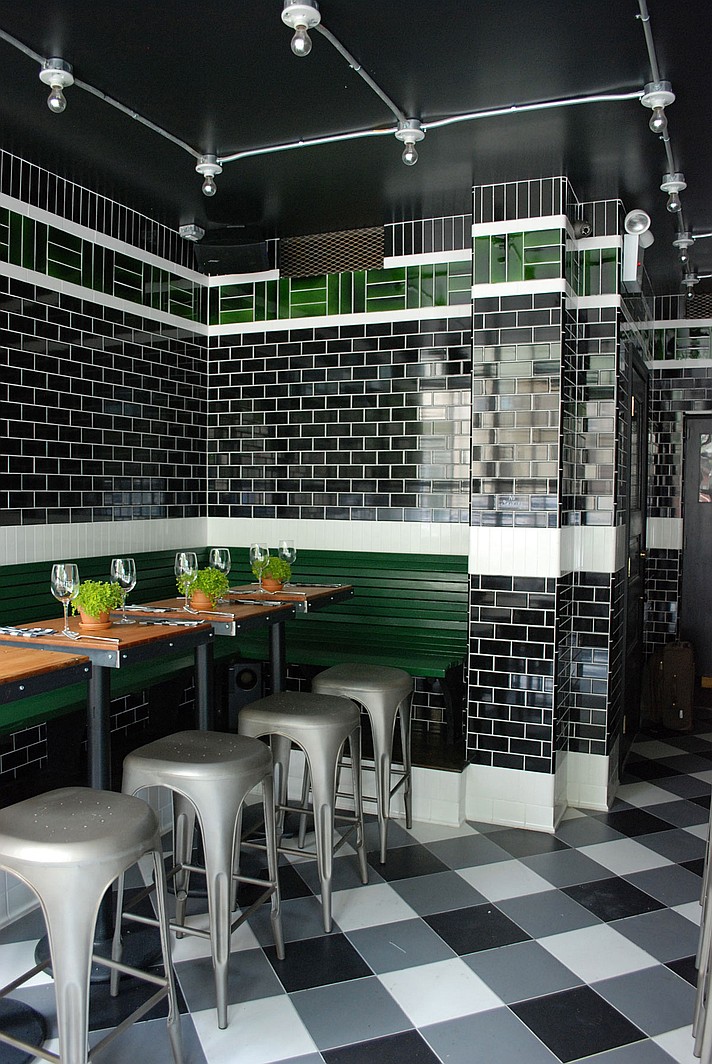Moody Indigo
Several
designers are developing a case of the navy blues. Paris-based Stephanie
Coutas said dark navy, as a counterpoint to white marble and mother of
pearl, is a growing trend in luxury projects in the City of Light. Los
Angeles designer Sasha Emerson hailed the color’s versatility: “It plays
so well with other colors, such as pink, cream, gray, coral and sage.”
Architect
Barbara Bestor
’s tried-and-true: Benjamin Moore’s Old Navy mixed with a little
black.
Painterly Rugs
Whether it looks
like a Motherwell or a Monet, a rug “that is visually fluid with
irregular patterns breaks the grid of rectangular rooms and furniture,”
said Mr. Bush. (See examples from Marc Phillips’s collection here.)
“They are true art pieces,” said Sydney designer Thomas Hamel,
especially those rendered in silk “that shimmer and constantly change
color.”
Smoky Glass
“Clear is so last
year,” quipped Mr. May. Instead, Los Angeles designer
Kelly Wearstler
opts for smoked glass to “strike a tension between raw and
refined, masculine and feminine.” That smokiness “adds a sense of
mystery and intrigue to an otherwise typical material,” she said. For
Mr. Harris, the effect, as seen in Sebastian Scherer’s Isom tables for
Neo/Craft, “exudes a sultry 1970s vibe that reminds me of an intimate
club that serves really good Manhattans.”
Graphic Tiles
Thanks to the allure of indoor/outdoor living, colorful concrete tiles
(such as these from Amethyst Artisan shown here) continue to move from
commercial to home spaces, said Los Angeles designer
David John Dick
: “It’s a perfect combination of graphic design and interior
design.” Sam Allen, a Connecticut designer, views them as a sneaky
image-booster. “These unusual ethnic tiles give the appearance that you
are well-traveled,” he said.
Chevron Prints
If used simply and
elegantly, the ever-popular military motif “can be a strong look on its
own,” said Simon Rawlings, creative director of
David Collins
Studio in London. But as a repeated zigzag on wallpaper or
pillows, it’s passe. “You know it’s time to kill the trend when you can
buy a Crock-Pot with a chevron pattern on it,” observed Atlanta designer
Kerry Howard.
Text as Décor
“French writing on
linen is o-u-t,” said San Francisco designer Lisa Lorino. Ditto “Keep
Calm” posters, suggested Lana Sexton of Manhattan’s Nest Interiors. And
metal letters lit with light bulbs darken many a designer’s mood. When
Boston-based
James Swan,
author of “101 Things I Hate About Your House,” spotted one such
installation, spelling “EAT,” in a home, “I took a houseful of strangers
out to dinner—on me—rather than be trapped staring at that sign,” he
recalled.
Mirrored Furniture
This attempt
to evoke 1930s Hollywood glamour is starting to show its age. “A
mirrored accent piece may be gorgeous,” Los Angeles designer
Christian May
acknowledged, “but if I see the scuffs on my shoes reflected in
one more cheap catalog credenza, I’m going to scream.” Only the
reincarnation of Carole Lombard, said Atlanta designer Stan Topol, could
make him reconsider the look.
The Ombré Look
When they first arrived on the scene, dip-dyed furnishings were a
clever way to update familiar shapes, said upstate New York designer
Jeffrey Harris,
“but now Pinterest is full of the sad, clichéd DIY results.”
Ombré fabric, Mr. May said, “will always be a décor classic, but chair
legs dipped in paint are another thing entirely.” Richard Misso, design
director of the Stylesmiths in Melbourne, Australia, offered this
succinct advice: “Keep ombré in the hair salon.”
Beni Ourain
Rugs
Along with overdyed patchwork Persian rugs,
these shaggy Moroccan black-and-whites are overexposed. “Vintage Beni
Ourain rugs that cost $10,000 are now being knocked off on eBay,” noted
Ms. Sexton. Los Angeles designer Mark Cutler offered a more blunt
assessment: “They got us through the recession with luxurious pile,
simple color and a tempting price point, but it’s time for them to stay
in the souk.”
























